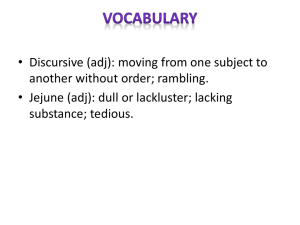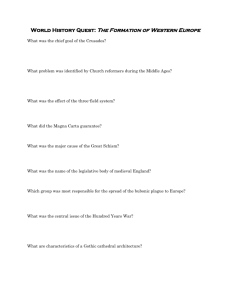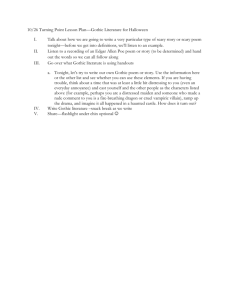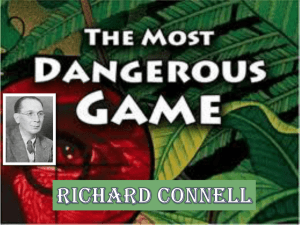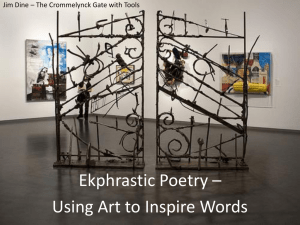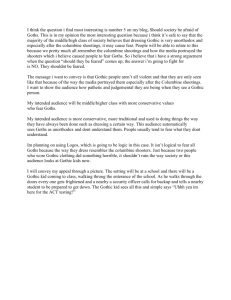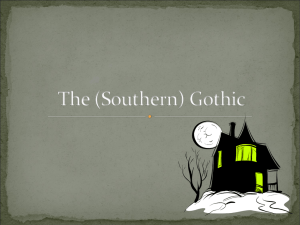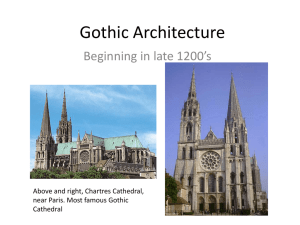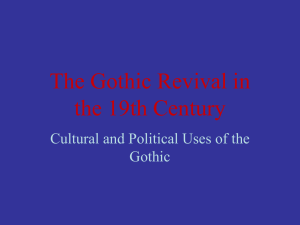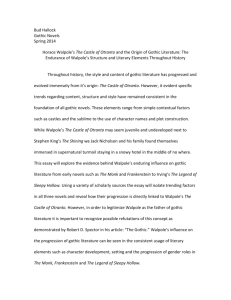Mystery & Gothic Fiction
advertisement
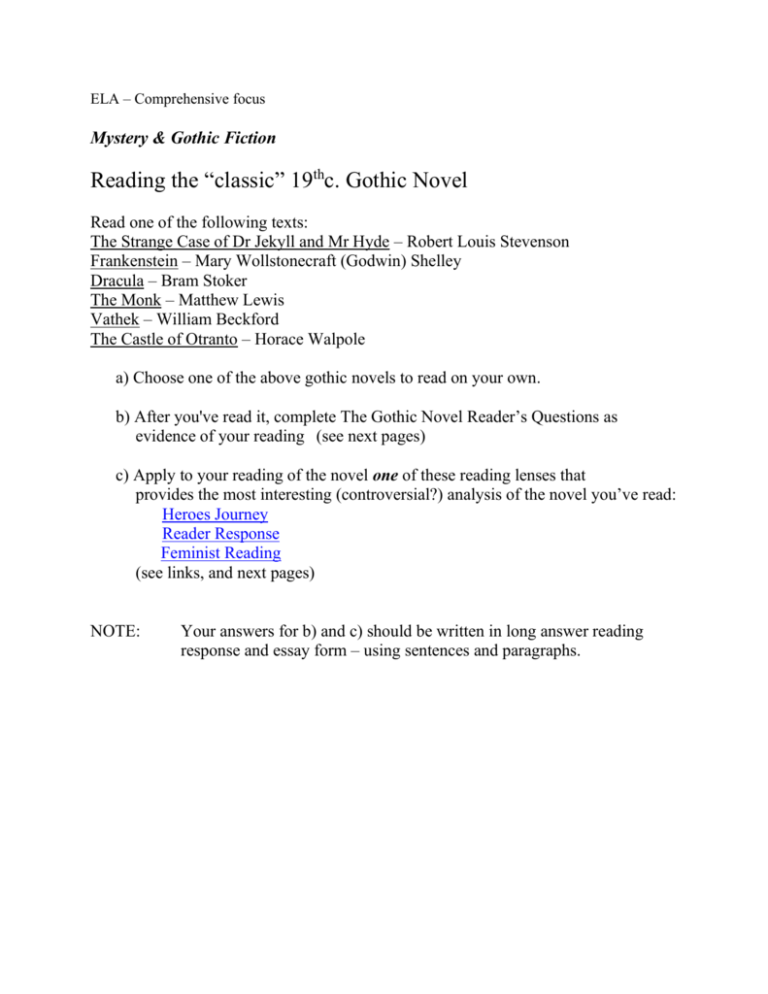
ELA – Comprehensive focus Mystery & Gothic Fiction Reading the “classic” 19thc. Gothic Novel Read one of the following texts: The Strange Case of Dr Jekyll and Mr Hyde – Robert Louis Stevenson Frankenstein – Mary Wollstonecraft (Godwin) Shelley Dracula – Bram Stoker The Monk – Matthew Lewis Vathek – William Beckford The Castle of Otranto – Horace Walpole a) Choose one of the above gothic novels to read on your own. b) After you've read it, complete The Gothic Novel Reader’s Questions as evidence of your reading (see next pages) c) Apply to your reading of the novel one of these reading lenses that provides the most interesting (controversial?) analysis of the novel you’ve read: Heroes Journey Reader Response Feminist Reading (see links, and next pages) NOTE: Your answers for b) and c) should be written in long answer reading response and essay form – using sentences and paragraphs. Introduction to Gothic Literature What is Gothic Literature? Gothic fiction began in 18th century England when Horace Walpole wrote the novel, The Castle of Otranto in 1764. Inspired by the castle he built for himself, called Strawberry Hill, and by the ideals of honour and chivalry from medieval times, he told a twisting and strange and terrible yet wonderfully popular story of Theodore, the heir to the castle, who is kept from his inheritance by the villain Manfred. The Gothic novel depends on the paradox of bringing the reader into a state of “pleasant terror”. The features of gothic fiction include horror (both psychological and physical), mystery, the supernatural, ghosts, haunted houses with Gothic architecture features (turrets, towers, gargoyles, elaborate decorations, etc. (see Strawberry Hill link above)), castles, darkness, death, decay, doubles, madness, secrets and hereditary curses. The stock characters of gothic fiction include tyrants, villains, bandits, maniacs, Byronic heroes, persecuted maidens, femmes fatales, madwomen, magicians, vampires, werewolves, monsters, demons, revenants, ghosts, walking skeletons (the walking dead), and the Devil himself. Important ideas in the Gothic include: anti-religion, especially criticism of the Roman Catholic Church; the romanticism of an ancient Medieval past; melodrama (over-sensationalized and overemotional characters and situations); and parody (mockery; including self-parody). Gothic themes and tropes Themes and tropes are recognizable features or characteristics that appear often in a genre of literature or art. The tropes in Gothic Literature include: Darkness – in contrast with the light Isolation – heroes and villains are, or feel, alone and isolated) Madness – and confusion over what is real or unreal Frame Narrative – the Russian Doll effect - as in, the story begins as one story and then becomes another, only to end up returning to the initial story in the conclusion Unreliable narrators – confusion over what is real in the storyteller’s mind, piecing together rumour, folklore, local history, diaries, and letters. Disease – physical and/or mental Superstition – ghosts, spirits, phantoms, monsters - death and the afterlife are prominent concerns Dreams and Nightmares – confusion between the waking and sleeping world (sleep as a metaphor for death) Eroticism & Romance – females portrayed as weak and sexually vulnerable; males are conquerors and protectors The Church – a less than effective anti-dote to the spirits, diseases, and superstitions - corrupt churchmen Atheism – often heroes prevail because they overcome the supernatural with science and rationale, and by rejecting the religious norms of the time Class division – characters are portrayed as being divided along class, economic, and cultural lines Other characteristics of Gothic Literature Tall tales - Many Gothic stories use a frame narrative, with someone using notebooks, letters and verbal rumours to construct the story. Uncertain and inconclusive endings - Often, sympathetic or innocent characters are killed off (Lucy Westenra in Dracula). Evil characters may come to a sticky end (Ambrosio in The Monk). Or the story may be left somewhat open-ended (The Monster in Frankenstein is left walking the Arctic wasteland). Epiphany or revelation? – There may be redemption or catharsis in Gothic tales, but they sometimes stray from this classical model (The Bloody Countess – Alejandra Pizarnik – 1968) and leave the reader empty-handed (see uncertain endings). Preoccupation with the role of women. Deviation from social norms - characters as “loners” or “outsiders”? Allegory or Parable - the story is a morality tale, which warns us about the consequences of certain behaviour The Gothic Novel Reader's Questions As you read a piece of gothic literature, keep these questions in mind: 1) How is the story a tall tale (compelling yet unbelievable) told by a narrator that is not reliable because of their bias, or because of their questionable psychological make-up? 2) What are the three most recognizable and repeated themes and tropes in the story? Identify at least three references (include the page numbers) for each theme/trope, to support your answer. 3) How does the story conclude? How is it characteristically gothic? Explain. 4) How does the story contrast the worlds of light and dark? Good and evil? 5) How is the story a love story, or romance, that is obsessive and unhealthy? (This need not be love between a man and a woman; it could be a character's obsessive love for a thing, a place, or an idea?) 6) When was the story written? What were the social issues of that time? How can the story be understood as a reaction to the culture and social issues of the time in which it was written? Can it be read as social comment, critical of its times? 7) Could the story be read as an allegory or parable? If so, what is the moral, or lesson, to be learned?
